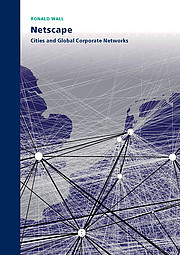NETSCAPE: Cities and Global Corporate Networks Defended on Friday, 5 June 2009
Today the existence of the ‘network society’ is often asserted. However, there is a lack of empirical understanding of what these networks actually are, especially concerning networks between cities worldwide. Therefore, this study contributes to economic geography because it is empirically based on actual data concerning global multinational networks. Based on this, the network characteristics of temporality, structure, scale, competition and performance are explored using network analysis techniques. In the temporal study the historical process of network formation is discussed. In the study on structure the contemporary worldwide corporate network is empirically exposed. In this, the hierarchies, interdependencies and distribution of the network is revealed. For instance, it is demonstrated that the majority of corporate activity takes place ‘between’ cities and not ‘within’ their municipal boundaries. The study on corporate scale shows how differences in firm types (global, European and Dutch), will reveal variations in city hierarchies and interdependencies. In the competition study a new measure has been introduced to assess competition based on the economic ties between cities. The study on network performance shows that although the reach of corporate activity between nations is global, the scope of this activity remains particularly constrained between nations of the developed world. Hence, contrary to popular belief, the corporate world is not flat but highly polarized. Based on this, it is shown that network hegemony is strongly associated with the global competitivity levels of nations. This study demonstrates the utility of network analysis to understand cities within an increasingly global world - in which the methods, techniques and results can be of interest to scientists, policymakers, planners and developers alike.
Keywords
cities, networks, multinationals, disproportionality, power-law, network temporality, network structure, network scales, network competition, network performance, centrality, cliques







